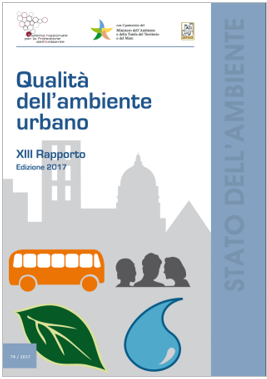Decreto 11 maggio 2015
Approvazione della metodologia che, nell'ambito del sistema statistico nazionale, è applicata per rilevare i dati necessari a misurare il grado di raggiungimento degli obiettivi ...
August 2007
Introduction
The BAT (Best Available Techniques) Reference Document (BREF) entitled Large Volume Inorganic Chemicals – Solids and Others (LVIC-S) industry reflects an information exchange carried out under Article 16(2) of Council Directive 96/61/EC (IPPC Directive). This Executive Summary describes the main findings, a summary of the principal BAT conclusions and the associated consumption and emission levels. It should be read in conjunction with the preface, which explains this document’s objectives; how it is intended to be used and legal terms. It can be read and understood as a standalone document but, as a summary, it does not represent all the complexities of this full document. It is therefore not intended as a substitute for this full document as a tool in BAT decision making.
Scope of this document
The BREF on the LVIC-S industry is a neighbour to the Chlor-alkali (CAK), Large Volume Inorganic Chemicals – Ammonia, Acids and Fertilisers (LVIC-AAF), and Speciality Inorganic Chemicals (SIC) BREFs.
A homogeneous and strictly defined LVIC-S industry does not really exist, and there no clear borderlines between the above-mentioned four inorganic chemical industry groups and the four associated BREFs.
The scope of this document is, in principle, relevant to industrial activities covered in Annex I to the IPPC Directive (96/61/EC) Section 4.2. ‘Chemical installations for the production of basic inorganic chemicals’, in particular to activities covered in points 4.2.d and 4.2.e.
Annex I to the IPPC Directive does not give any threshold value of the capacity for chemical industry plants, neither does it define the concepts of ‘large volume’, ‘cornerstone’ and ‘selected illustrative’ LVIC-S products used in this document, however, the following criteria were adopted for the selection of the processes covered in this document:
- scale and economic importance of the production
- number of plants and their distribution in different Member States
- impact of a given industry on the environment
- accordance of the industrial activities with the structure of Annex I to the Directive
- representativeness for a wide range of technologies applied in the LVIC-S industry
- validated data and information on LVIC-S products sufficient to formulate ‘Techniques to consider in the determination of BAT’ and to draw BAT conclusions for the manufacture of these products.
Collegati:
Approvazione della metodologia che, nell'ambito del sistema statistico nazionale, è applicata per rilevare i dati necessari a misurare il grado di raggiungimento degli obiettivi ...
ID 25049 | 03.12.2025 / In allegato
Roma, 1° dicembre 2025 - Il Ministero delle Imprese e del Made in Italy e il Ministero ...

ISPRA Stato dell'Ambiente 74/2017 - Versione provvisoria
Testata editoriale iscritta al n. 22/2024 del registro periodici della cancelleria del Tribunale di Perugia in data 19.11.2024